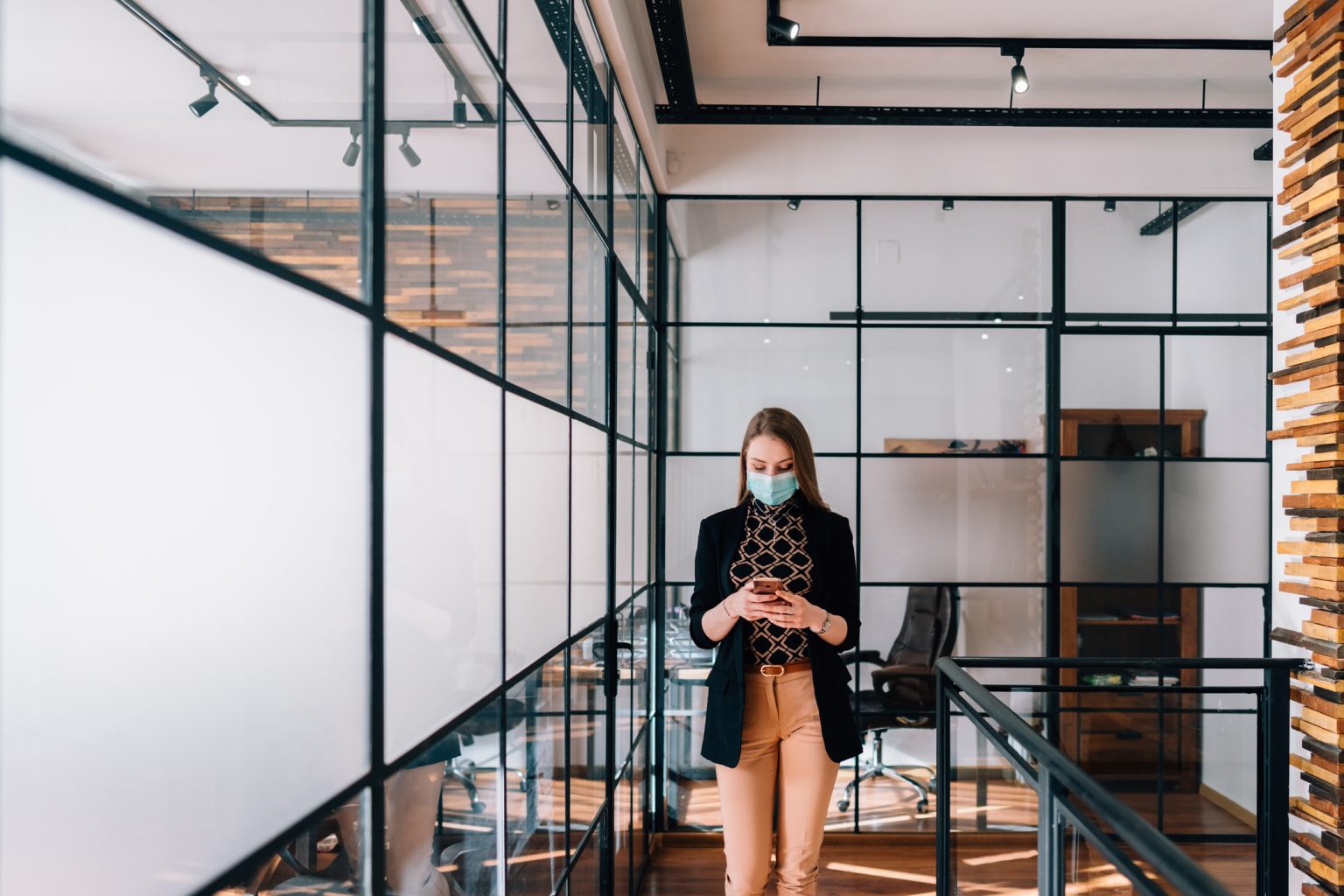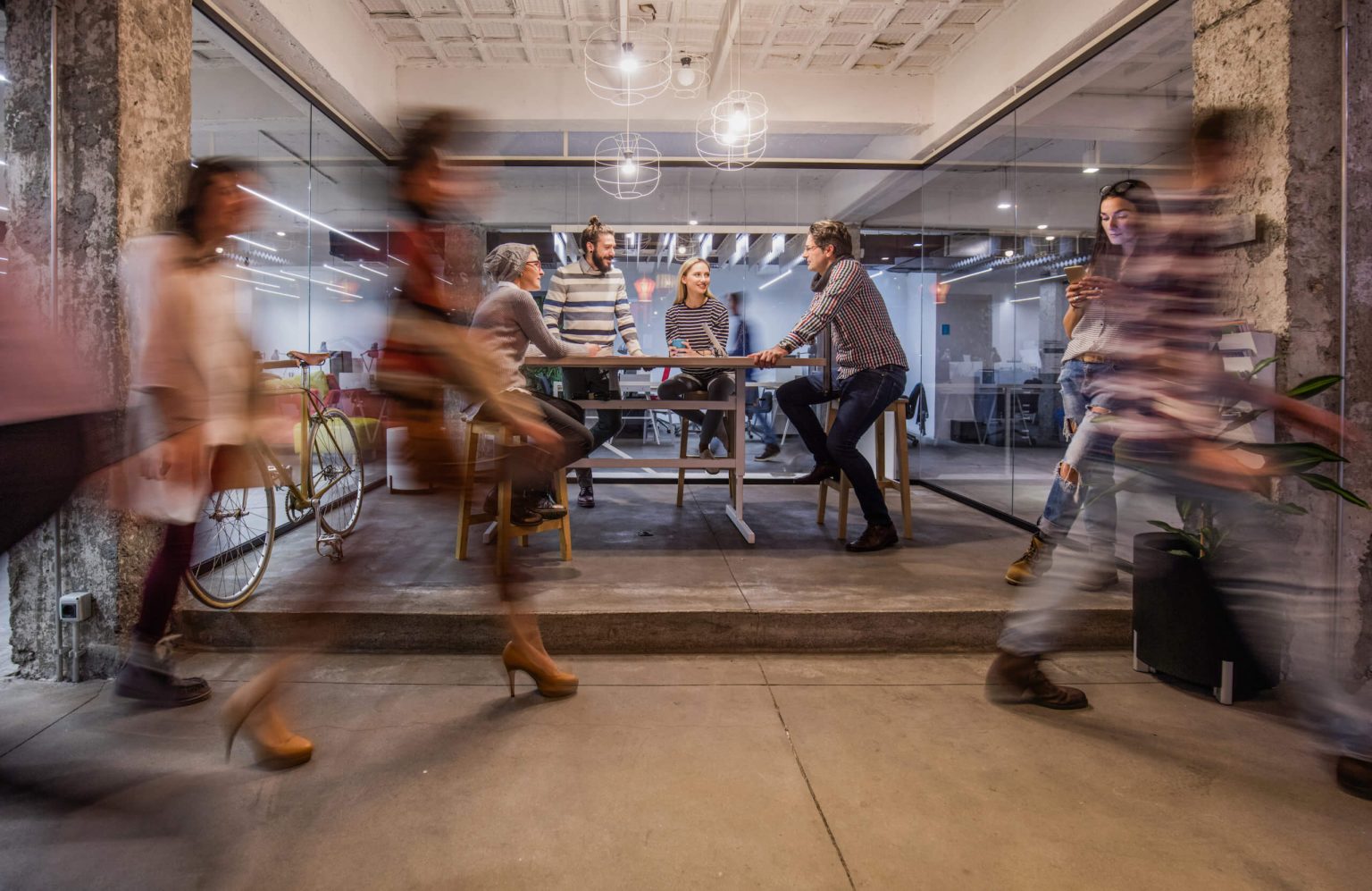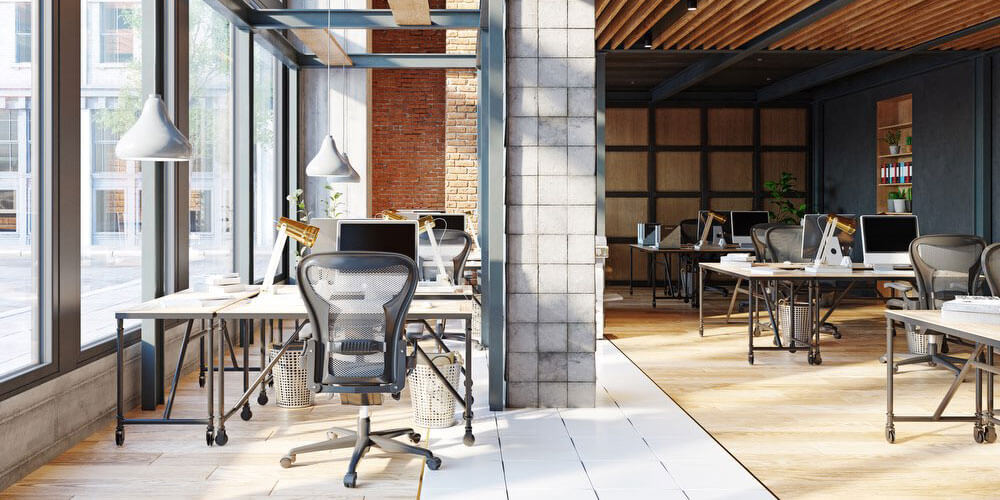As real estate developers, we’re always thinking about space: how we can make it better, how it can work more efficiently, and how people will feel best interacting within it. We are now thinking about the space between all of us as we have learned to keep a six-foot space between ourselves and others, including our own close friends. With this in mind, we recently hosted a series of webinars with the Vegas Chamber of Commerce to examine how we can best prepare to return to our offices in a safe and thoughtful way.
Through the course of four webinars: “Day One,” “Saving Restaurants and Your Safety: Bringing Business Dinners Back,” “Your Brain on COVID: How Fear will Prevent Your People From their Best Work,” and “No More Hugs: How to Keep and Grow your Team’s Culture with Six Feet of Separation,” we brought in experts to share their insights to guide companies through this transition.
There has been a lot of talk about how businesses are reexamining the office – and even asking the question, do we even need offices? There is one benefit that stands apart from the rest – and that is human connection. We are meant to be around others and what we are finding from our own team is that connecting with colleagues is what people are missing the most.
With that in mind, we brought together some of the nation’s best minds in various fields to share their insight and help provide a road map to what reopening might look like. It struck me that regardless of the experts’ background and area of expertise there are common themes. We need to be innovative. We need to listen. We need to empower those around us so their talents can shine.
If you weren’t able to join us, we are happy to share each of these webinars with you now.
Day One
Before we even invite employees back to work, we need to do work ourselves. To help us understand this, we featured Darrel Fullbright, office practice lead from world-renown architectural firm, Gensler, and Kylie Roth, global strategy leader for Knoll, a constellation of design-driven brands for the workplace and home. They shared actionable insights on first steps in preparing the workplace and covered topics including alternating work schedules and modifying workstations. View the whole discussion, which we recorded because we knew it would be fell of insight, here.
Saving Restaurants and Your Safety: Bringing Business Dinners Back
Deal makers know that the business lunch or dinner are one of the most valuable cards in the deck but restaurants are struggling and need us just like we need them. We called on industry veterans to share their expertise on how restaurants and bars will be able to safely resume service, how to open poised for long-term success, how to ensure businesspeople, friends and families feel safe when dining out, and the importance business leaders play in saving the vulnerable restaurant industry. Moderated by J. Riley Lagesen, founder and chair of Davis Wright Tremaine, LLP’s national restaurant industry practice group, panelists included Scott Gerber, principal and CEO of Gerber Group and Elizabeth Blau, founder and CEO of Blau Associates. View the complete discussion here.
Your Brain on COVID: How Fear will Prevent Your People From their Best Work
People are in the offices but how do we make sure they feel safe and empowered enough to do their best work? The psychological impact of COVID-19 and what Psychology Today refers to as “an epidemic of anxiety” is on the minds of leaders concerned with their team’s health and happiness along with business performance. Understanding how the brain has been affected by this crisis and what business owners can do about it is key to unlocking fear and guiding teams. The discussion with Phil Dixon, MSc., founder and CEO of the Oxford Brain Institute and Tom Rieger, president and CEO of National Business Innovations, LLC. included critical insights from two renowned leaders in corporate psychological health who are not only well published authors but have guided the likes of Apple, Google, Facebook, the US Military and NASA as panelists. View the whole conversation here.
No More Hugs: How to Keep and Grow your Team’s Culture with Six Feet of Separation
People who know me know that this has been one of the hardest things for which to adapt. Handshakes, much less hugs, have been banished in the last few months among both personal and professional contacts. As businesses begin to re-open it is more important than ever that teams feel engaged and in-step with company culture, while maintaining social distancing. Alex Masters-Goessling, senior director of communications and employee enablement at Electronic Arts Inc. (EA) and Mark Tomaszewicz, chief experience officer at Bulldog Drummond – two leaders in employee engagement – provided actionable suggestions to help teams feel safe and valued as they are welcomed back into the physical workplace. This enlightening flow of ideas can be seen here.
We’ve all proven that we can work from home when we need to, even in some of the most stressful time imaginable, but should we? I believe it’s in all our best interest to get back to work in our offices as long as we’re thoughtful about it and listen to people who are experts. We at Matter Real Estate believe that when our neighbors and colleagues’ succeed, we all succeed. We are here to serve as a recourse. I’d love to hear your thoughts on these videos, or other issues you anticipate. Shoot me a note at info@materrealestate.com. We’re all in this together and together we’ll get back to work shoulder to shoulder and face to face, even with 6 feet separation!




